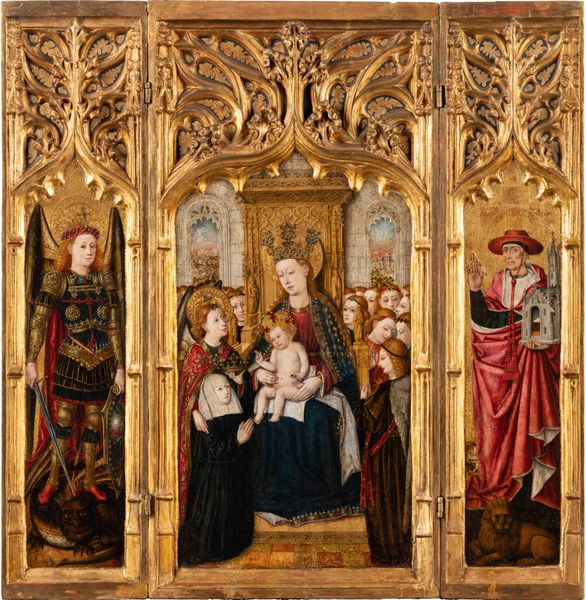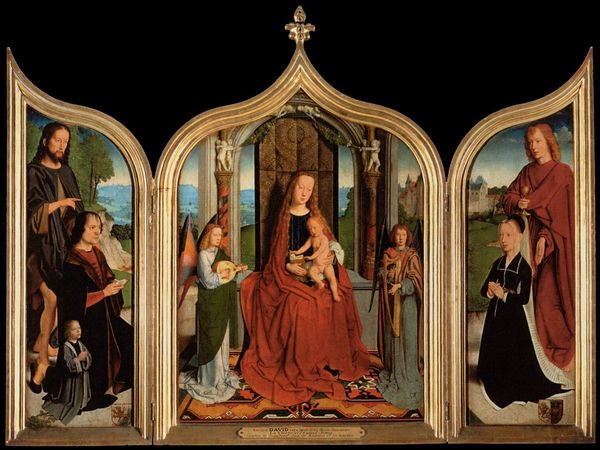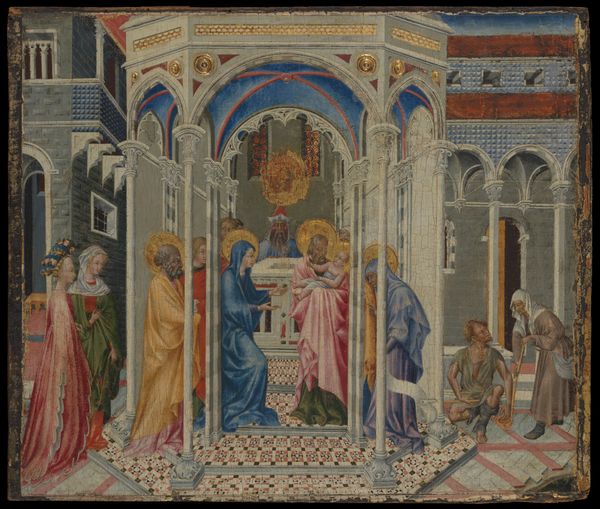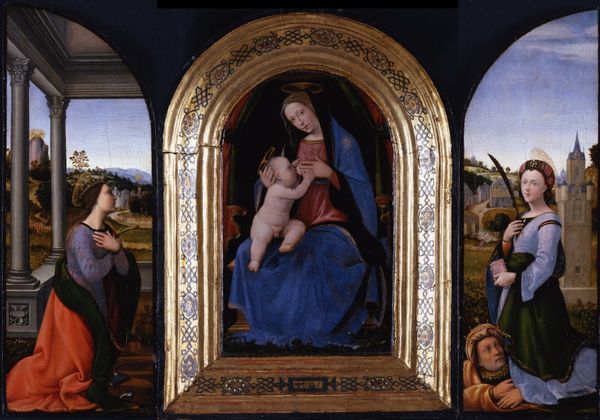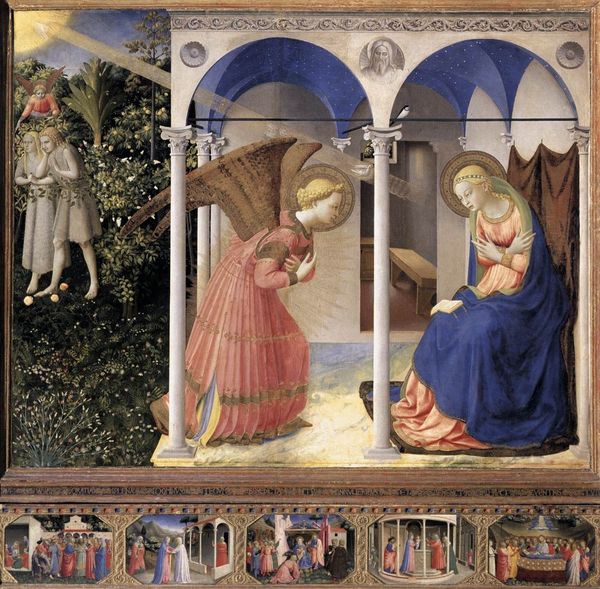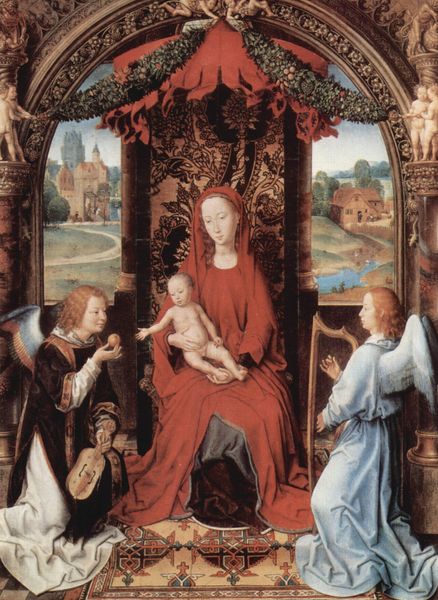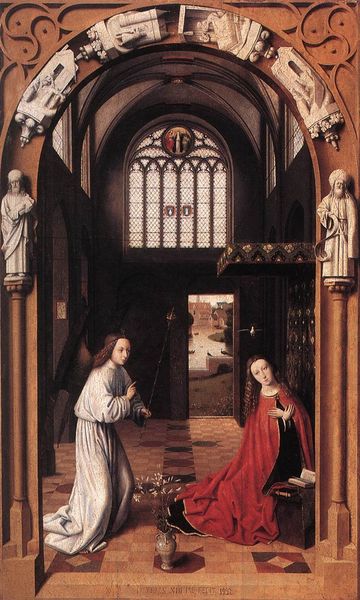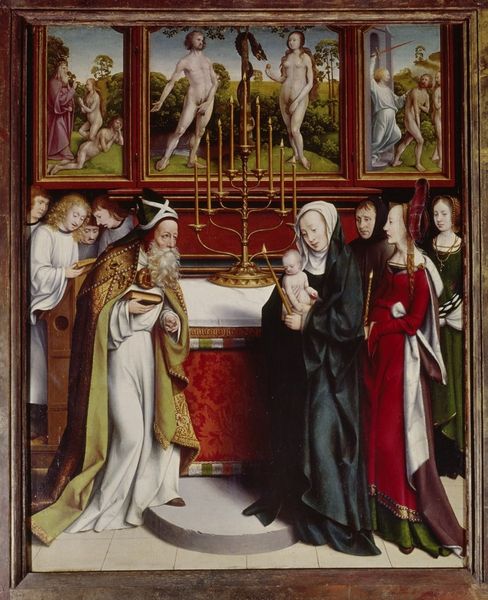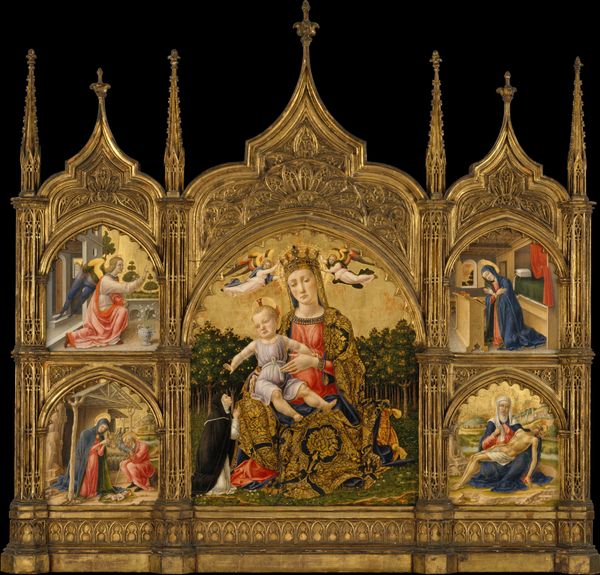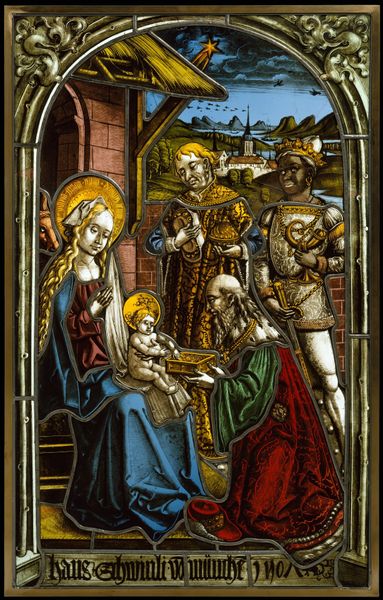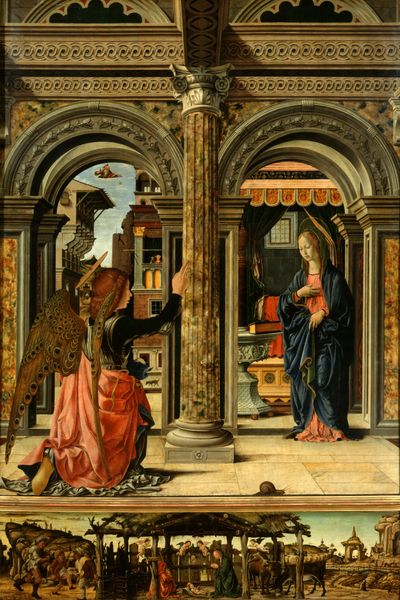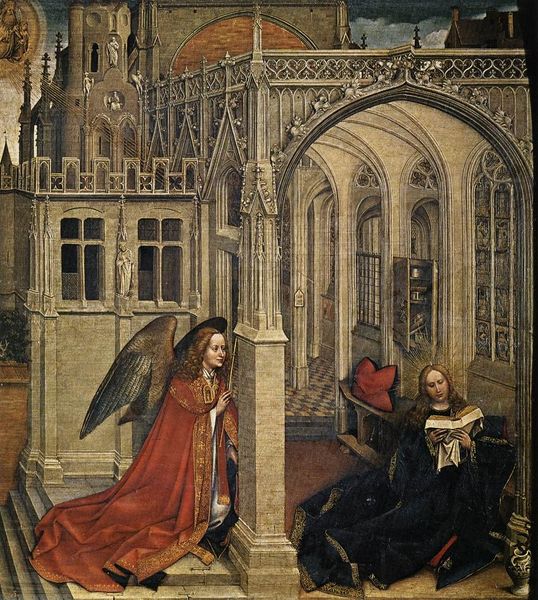
Dresden Triptych (Virgin and Child with St. Michael and St. Catherine and a Donor) 1437
0:00
0:00
janvaneyck
Gemäldegalerie Alte Meister, Dresden, Germany
panel, tempera, painting, oil-paint, textile
#
portrait
#
medieval
#
panel
#
tempera
#
painting
#
oil-paint
#
gothic
#
landscape
#
textile
#
holy-places
#
figuration
#
historic architecture
#
traditional architecture
#
jesus-christ
#
child
#
christianity
#
genre-painting
#
history-painting
#
early-renaissance
#
virgin-mary
Dimensions: 27.5 x 37.5 cm
Copyright: Public domain
Curator: Immediately, I am struck by the stillness and intense detail. It’s almost photographic in its clarity, which is incredible for a painting made in 1437. Editor: Absolutely. That hyperrealism definitely has a captivating effect. Looking at this triptych, titled "Dresden Triptych," also known as the "Virgin and Child with St. Michael and St. Catherine and a Donor", by Jan van Eyck, the architecture feels both grand and confining, somehow. Curator: Notice how van Eyck presents the Virgin Mary, enthroned in what looks like a church. He is portraying a very particular theological concept, making the church the symbolic embodiment of the Virgin, who literally and figuratively bears Christ, thus is a “holy place” for humanity. Editor: Right, the use of architecture reinforces the Madonna’s sanctity, yes, but I'm more drawn to the earthly implications. Placing religious figures in opulent, contemporary settings, complete with expensive textiles, served to legitimise both sacred and secular power at the time. Isn't that interesting how interwoven social power and religion were, reinforcing each other in plain sight? Curator: Absolutely, art wasn't created in a vacuum. The figures of Saint Michael and Saint Catherine, flanking the central panel along with the donor kneeling next to Michael, are significant symbols, drawing upon deep wells of collective memory. Michael, the protector, and Catherine, the learned martyr – together, they tell a story of protection, knowledge, and piety. Editor: I’m especially curious about the donor in this piece. What does his inclusion tell us about the role of patronage and social mobility? Was this art functioning as an explicit status marker? The kneeling pose also invites reflections on what the negotiation between earthly and divine power dynamics really meant back then. Curator: No doubt it served multiple purposes. I agree with your observation about it highlighting the intersection of earthly power with the celestial narrative that Early Renaissance triptychs and panel paintings offered, revealing subtle truths of this moment in European history. Editor: Ultimately, beyond its stylistic and iconographic details, van Eyck’s triptych reflects complex layers of power and representation. It prompts us to critically assess how historical narratives and visual forms work together, influencing our own perception and reinforcing or challenging assumptions even today. Curator: Precisely, art provides us access to that layered reflection of humanity's spiritual and historical quest; this visual and spiritual palimpsest both preserves and subtly transforms.
Comments
No comments
Be the first to comment and join the conversation on the ultimate creative platform.

